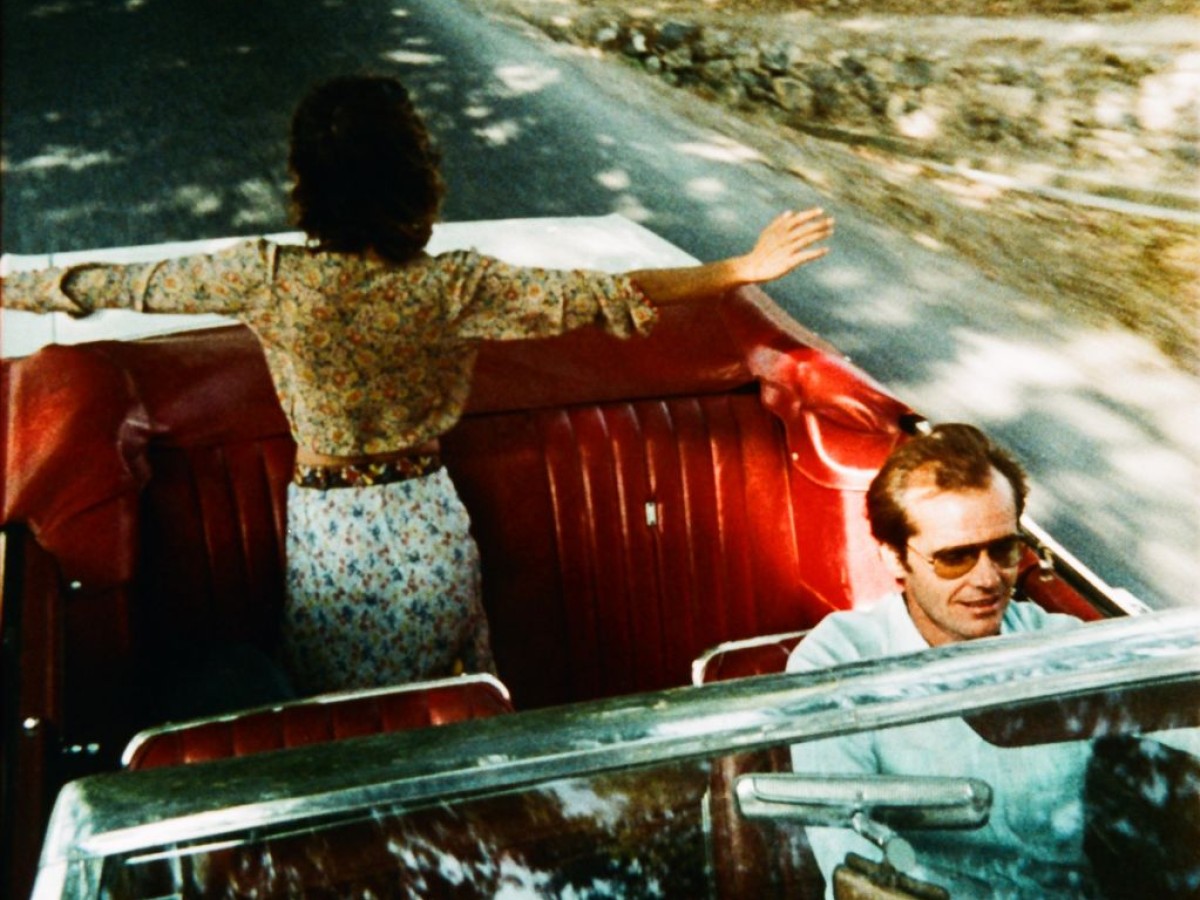Drifter
Road | Movie: 1974 to 2007
September 1 to October 5, 2011
To kick off the fall season, the Film Museum presents Drifter, Part Two of a comprehensive project on road movies. The initial flowering of this highly influential “crypto-genre” is deeply connected to the American Cinema of the 1960s and early 1970s – and was presented at the Film Museum last September under the title Autokino. Drifter focuses more on the European “heirs” of the New Hollywood Generation – on a nomadic cinema of strays and runaways, on romantically or existentially motivated movements of travel and escape.
In the seventies and eighties, these works became central objects of desire for film critics and younger audiences. They tied into a certain lifestyle which looked at driving-without-a-purpose not as “dead, useless time”, but as an end in itself, the fulfillment of a basic human need. And they also represented the last beacon of modernist filmmaking in post-war Europe – with Michelangelo Antonioni’s The Passenger as its most exciting example. The oeuvre of Wim Wenders articulates the cinematic pleasure of driving in model form, and it is with his Alice in the Cities (1974), partially shot in the U.S., that the series begins. Wenders’ romantic relationship to drifting through wide open landscapes, fully realized in the German epic Im Lauf der Zeit / Kings of the Road, almost logically led him back to America – to Paris, Texas. In 1984 this film, along with Jim Jarmusch’s Stranger Than Paradise, formed one of the most popular intersections in the history of road movies.
Wenders also produced Chris Petit’s British road movie, Radio On, which contains many key elements of that cinematic moment: a disillusioned portrayal of the environment, a historical shift in the structures of work and family life, a search for new narrative forms – and the role of music in conjunction with the cinematic journey. During the opening credits of Radio On the songs receive equal billing to the actors. The band Pere Ubu expressed it best in “Dark,” the apotheosis of all driving songs: And I drive into the wilderness / and I drive to fill a sense of purpose / And I drive to find a perfect world / And the radio will set you free. This state of “being set free” is inherently ambiguous. At the start of the Thatcher/Kohl/Reagan eras, the drifters in these road movies appear as prototypes of a post-Fordist lifestyle. Always keeping a certain distance, they bear witness to a crumbling industry, the loss of traditional jobs, the postmodern transformation of cityscapes, and a changing social order. The need for a new orientation is palpable – for example in Alain Cavalier’s meandering cross-country journey, Le Plein de super, Adolf Winkelmann’s regionally anchored comedy, Die Abfahrer or Christian Schocher’s monumental odyssey, Reisender Krieger.
Alongside Alain Tanner’s masterpiece Messidor, Schocher’s film stands as one of the brightest stars in the firmament of Swiss road movies around 1980; Clemens Klopfenstein, Schocher’s brilliantly eccentric accomplice provided a third: his hypnotic travelogue Transes is among the most formally daring and narratively liberated “road movie essays” which flourished during this era. Further important works in this group were created by Marguerite Duras, Chantal Akerman, James Benning & Bette Gordon, Hartmut Bitomsky and Robert Kramer – often taking the shape of critical or melancholic journeys across the United States.
Parallel to these films, the lonely drifter also left his marks on genre cinema: in Walter Hill’s crystal clear action thriller, The Driver, George Miller’s post-apocalyptic Mad Max 2: The Road Warrior or Kathryn Bigelow’s western-cum-vampires, Near Dark. The more influential type of road movie, however (at least as far as the development of world cinema was concerned), appeared in the 1980s oeuvres of Jim Jarmusch and his soulmate from Finnland, Aki Kaurismäki. Their highly personal approaches brought them enormous success in art-house cinemas – and produced countless imitators, transforming the road movie into that all-purpose, feelgood cinematic mode it represents today. Another “turning point” may be located in the two magnificent films created by Gus Van Sant around 1990: Drugstore Cowboy and My Own Private Idaho look back on the seventies but also point the way forward to the magical realism of the ‘post-road movie’ era. These last two decades are represented in the series by only a few exceptional works, all characterized by their historical awareness – from Christian Petzold’s Pilotinnen and David Cronenberg’s Crash through Vincent Gallo’s The Brown Bunny to Sean Penn’s heartbreaking ultimate drop-out saga, Into the Wild: wanderlust till death.
Related materials
Program Auto-Kino - September 2010


